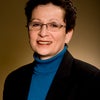Ella Fitzgerald would have been 100 years old on April 25. In honor of her amazing legacy, I profile outstanding women singers through history. Match each of these women with her accomplishment:
____ 1. The American Queen of Opera, after this soprano retired from singing, she served as Director of the New York City Opera.
____ 2. Her 1939 Easter Sunday concert at the Lincoln Memorial brought a huge crowd and a focus on segregation.
____ 3. The Queen of Jazz, her first record that sold a million copies occurred when she was 21.
____ 4. The Queen of Salsa, she was the most popular Latin artist of the 20th century.
____ 5. A jazz great, she introduced new ways of phrasing and tempo.
A. Marian Anderson
B. Ella Fitzgerald
C. Billie Holiday
D. Beverly Sills
E. Celia Cruz
At the age of 13, Marian Anderson began singing in her church choir. She began taking voice lessons at 15, and by 22, she had sung at the National Baptist Convention. A 1924 concert that she gave at New York’s Town Hall was not well attended and she became discouraged. However, in 1925, she reigned supreme against 300 rivals and sang in the New York amphitheater accompanied by the Philharmonic Orchestra. A contralto with a powerful, operatic voice, Anderson performed primarily for black audiences in the U.S. due to segregation. Her tours in Europe met greater success and she performed for royalty in Sweden and Denmark. Upon her return to the U.S., she sang to great success at Carnegie Hall and the New York Town Hall. Her Easter Sunday 1939 concert, sung in front of the Lincoln Memorial, brought a huge crowd and a focus on segregation as Constitutional Hall had denied her the opportunity to perform there due to her race. The recipient of the National Medal of Arts and many other honors, Marian Anderson has been inducted into the National Women’s Hall of Fame.
Known affectionately as The Queen of Jazz, the First Lady of Song, and Lady Ella, Ella Fitzgerald’s first break came in 1934 when her name was drawn in an amateur competition at the Apollo Theater in Harlem, New York City. Deciding to sing instead of dancing (as she had planned), she wowed the audience – who demanded an encore. In 1938, at the age of 21, she recorded A-Tisket, A-Tasket, which sold over one million copies, hit number one, stayed on the pop charts for 17 weeks and made her famous. Over the course of her over fifty-year career, Fitzgerald would sing with all of the jazz greats, win 30 Grammy awards and sell over 40 million records. She appeared on television, received the Kennedy Center Honors and the National Medal of Arts. Fitzgerald has been inducted into the National Women’s Hall of Fame.
“Lady Day”, jazz great Billie Holiday, pioneered new ways of phrasing and tempo. She began singing in nightclubs in Harlem in her teens where she was eventually discovered. She recorded her first album at 18. During the 1930s and 1940s, she recorded many songs that are today regarded as classics in the jazz library. Her singing of the poem, Strange Fruit, about the lynching of a black man, brought her fame. Inducted into the Grammy Hall of Fame, her life was portrayed in the movie Lady Sings the Blues where she was portrayed by Diana Ross. Holiday died an untimely death at age 44. She has been inducted into the National Women’s Hall of Fame.
America’s Queen of Opera, soprano Beverly Sills began her public singing career at the age of three. By the age of eight, she had sung in her first film and changed her name. In 1939, by age 10, she was on the radio. Her stage debut in theater came in 1945 and her operatic debut in 1947. In 1969, she appeared on the cover of Newsweek and in 1971, she made the cover of Time magazine, where she was described as the Queen of Opera. After retiring from singing in the opera, Sills served as Director of the New York City Opera and the chairwoman of Lincoln Center. The recipient of Grammy and Emmy Awards as well as the National Medal of Arts, the Kennedy Center Honors and the Presidential Medal of Freedom, Sills has been inducted into the National Women’s Hall of Fame.
The Queen of Salsa, Celia Cruz was the most popular Latin artist of the 20th century. A native of Cuba, she was viewed as an ambassador of their vibrant music as well as a symbol of artistic freedom for exiled Cubans. She grew up singing in cabarets in Havana and recorded some albums. In 1950, she was invited to sing in Puerto Rico and was prevented from returning to Cuba after Fidel Castro took over in 1959. She and her husband instead became U.S. citizens. Twenty-three of her albums went gold and President Clinton awarded her the National Medal of Arts in 1994. Her costumes were so flamboyant that one of them was acquired by the Smithsonian Institution. The recipient of multiple Grammy Awards including that for Lifetime Achievement, Cruz also appeared in movies and on a U.S. postage stamp.
Learn about more she-roes and celebrate amazing women. These accomplished singers are among the more than 850 women profiled in the book Her Story: A Timeline of the Women Who Changed America. I am proud to tell women’s stories and to write them back into history.
(Answers 1-D, 2-A, 3-B, 4-E, 5-C)
